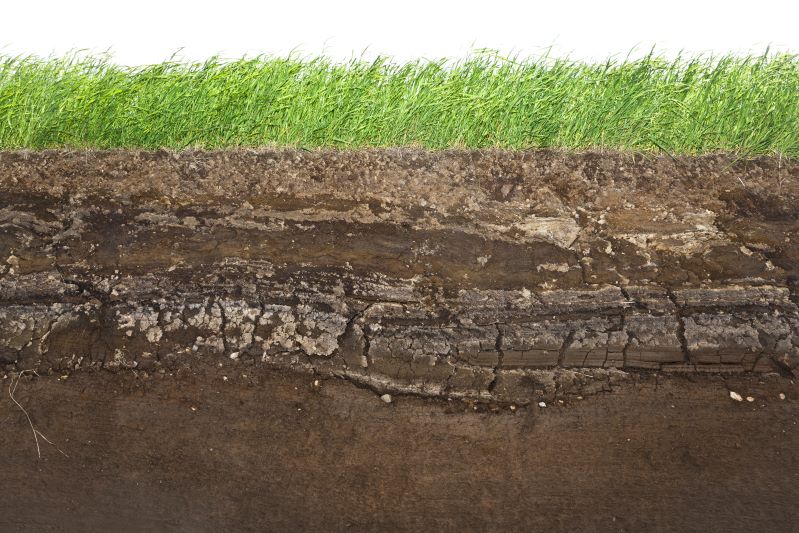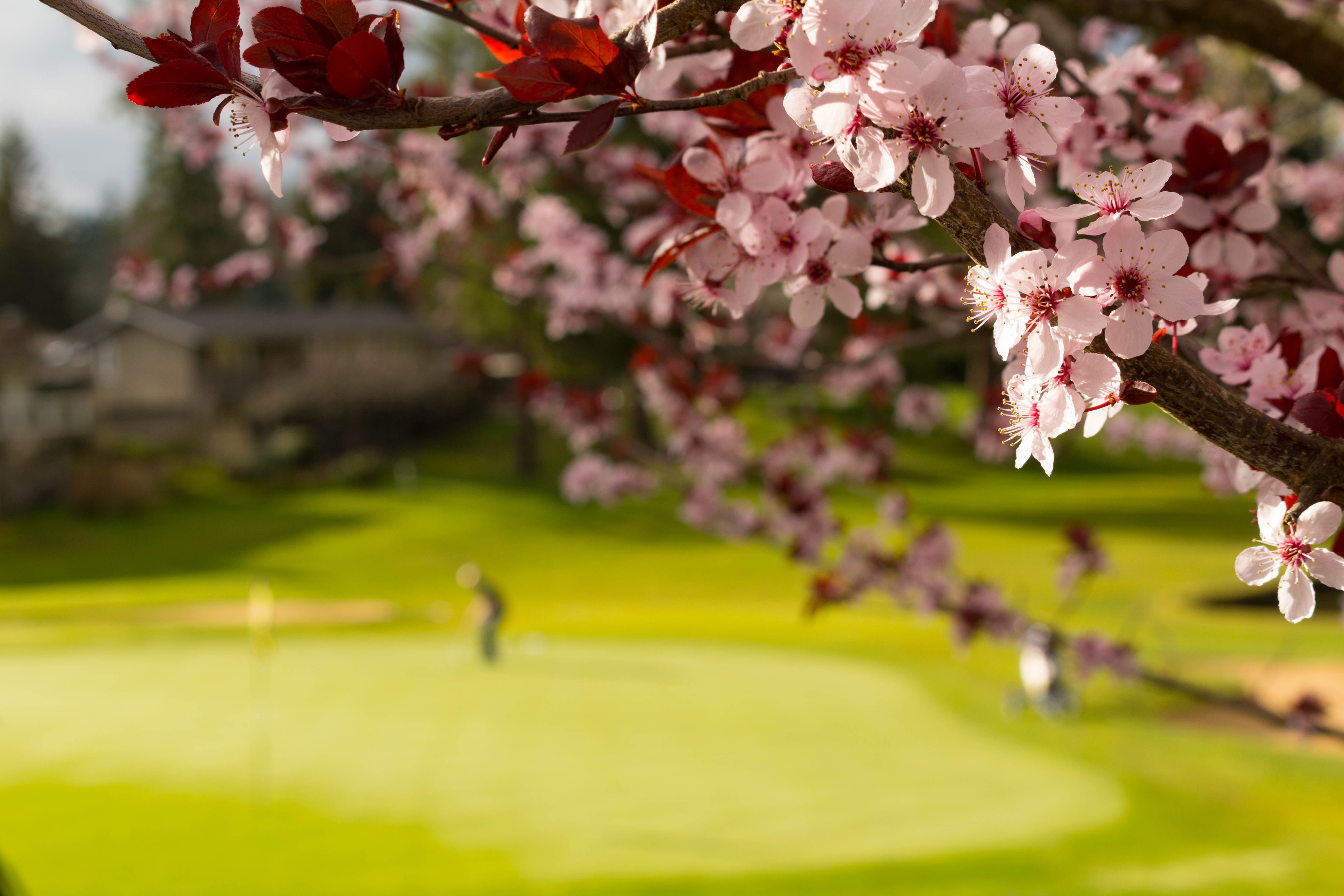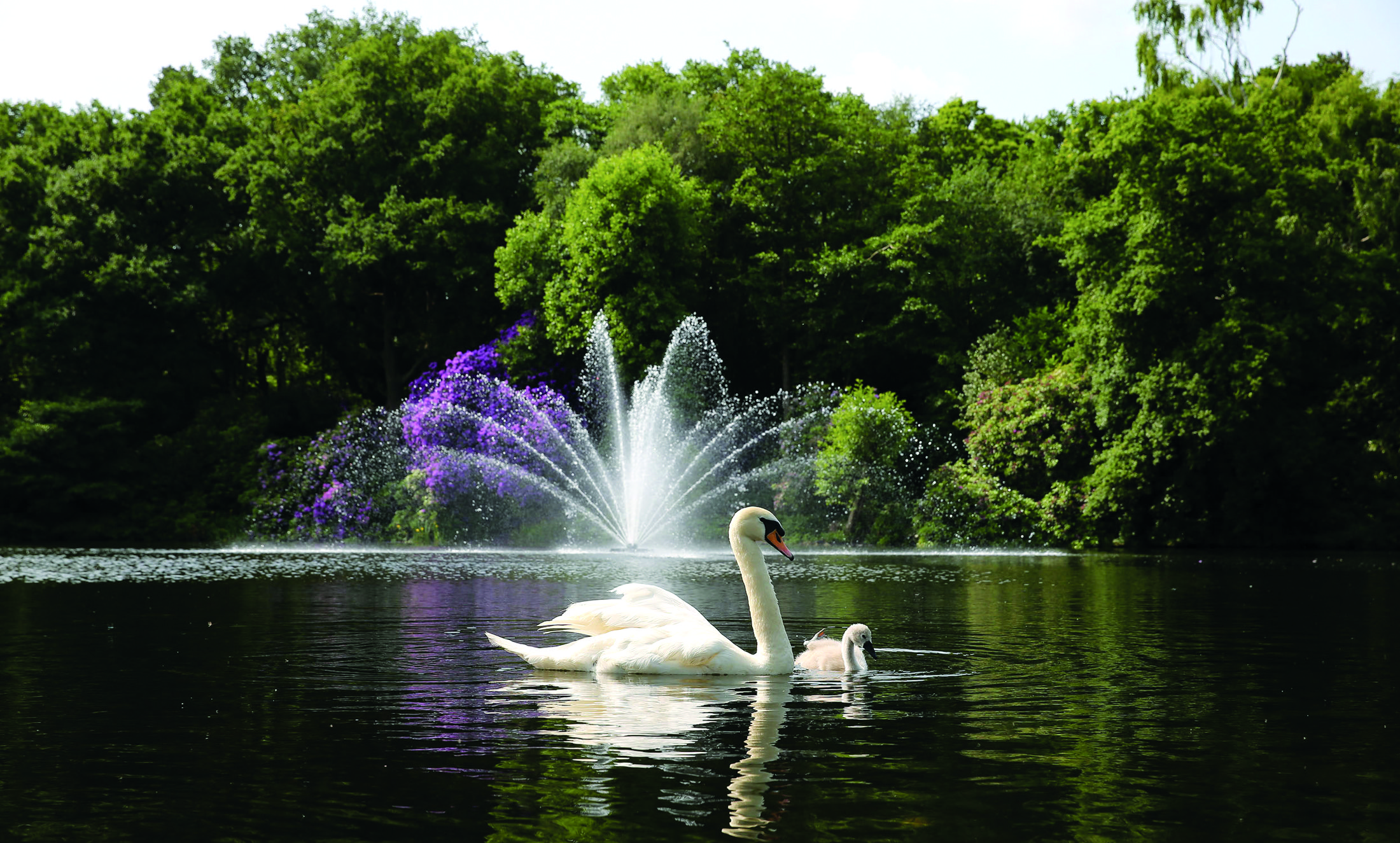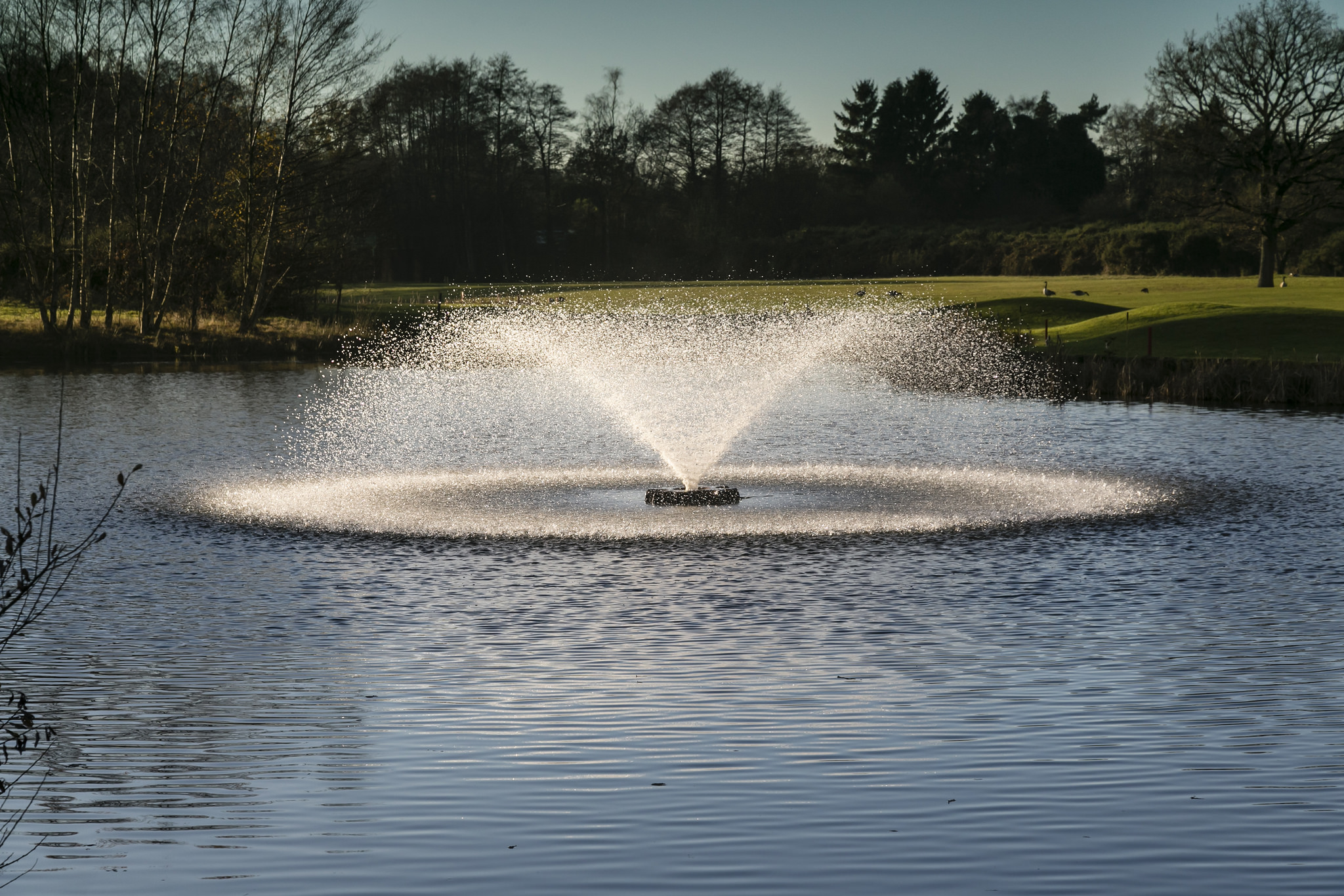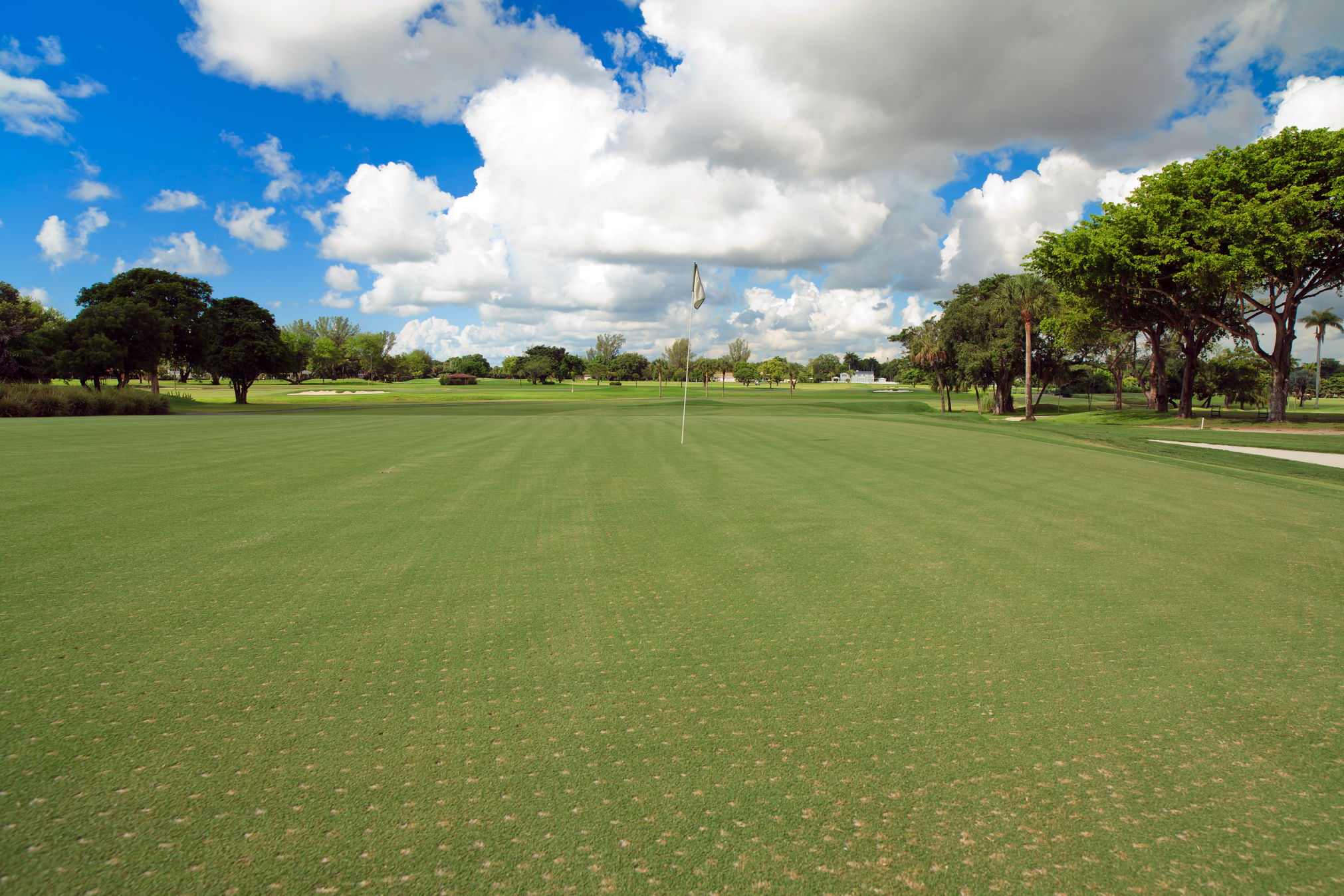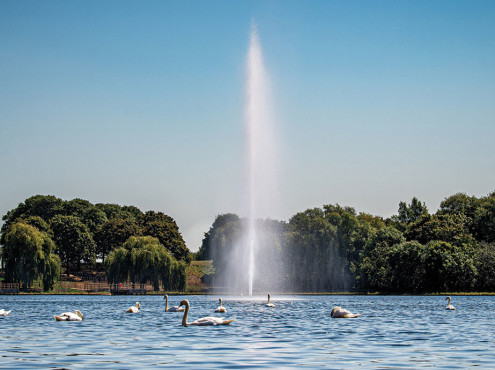- CONTACT US
- MOWERS
- VEHICLES
- APPLICATION
- Golf
- AERATORS
- VEHICLES
The Little Known Science Behind Healthy Water
CONTENTS
FEATURED STORIES

Reesink Turfcare
Reading time: 10 minutes
Inside healthy water this summer
There are scientific reasons why we're drawn to water, it's calming, peaceful and inspiring, adding beauty to any landscape. Our love for it is pervasive and why most of our holidays are situated as near to the shoreline as possible. So, to say an attractive waterscape will bring benefit to your venue is quite an obvious statement.
But, as with anything in life, maintenance is key to ensure it remains healthy, especially as we head into the warm weather of summer. Here, Simon Powell, business development manager for Otterbine at Reesink Turfcare, considers how water management for clean, healthy water in summer is critical.
Summer changes
When spring turns to summer, water begins to stratify due to differences in temperature. Before we get into the details of thermal stratification and lake turnover, there are two things to remember:
Water density depends on its temperature. The warmer the water, the less dense it becomes. Water is at its densest at 4 degrees.
Liquids of different densities often do not mix easily. The greater the difference in density, the harder it is to get the liquids to mix. Warm and cold water is as resistant to mixing as oil and vinegar.
Thermal stratification occurs when the water forms distinct layers through heating from the sun. Sunlight only penetrates a few metres into the lake, directly warming just the top few metres. As the water warms, it becomes less dense and remains at the surface, floating in a layer above the cooler, denser water below.
The shallowest layer is the top surface layer called the epilimnion. It's at the top and interacts with the wind and sunlight, so it contains the most dissolved oxygen. Although dissolved oxygen doesn't play a direct role in lake stratification and turnover, it is important for all aquatic organisms that require oxygen to survive.
The deepest layer is the cold, dense water at the lake bottom called the hypolimnion. The hypolimnion often remains around 4 degrees throughout the year, rarely gets any direct warmth from the sun and is isolated from the air at the surface of the lake. The hypolimnion contains the lowest amount of dissolved oxygen and can often become anoxic (zero dissolved oxygen).
The middle layer is the transition zone of water between the warm epilimnion and the cold hypolimnion, called the metalimnion. This is where the shallowest of the cool waters in the hypolimnion gradually warm up until they mix into the epilimnion. The point of greatest temperature difference (and therefore density difference) is called the thermocline and occurs within the metalimnion.
Warm summer water holds less oxygen than any other time of the year. As bacteria consume nutrients and dead organisms, oxygen depletes faster than it is replaced and the layer at the bottom loses all oxygen and becomes anoxic. Anaerobic bacteria digest organic material much more slowly, resulting in the formation of hydrogen sulfide gas, which has that sulfuric smell we all hate, and large algae blooms overcome the oxygen supply when decomposing, creating a toxic environment for wildlife. This situation remains until autumn cooling allows the lake to mix again unless aeration is added.
Aeration
Aerating water combats these problems by preventing stratification and increasing the overall oxygen supply in the lake by adding dissolved oxygen to the water. Aeration supports oxidative processes and aerobic digestion, where naturally forming bacteria consume or biodegrade organic material.
We speak of oxidation primarily in that oxygen attaches to phosphorus in the water and converts it to an insoluable form, unavailable to plants as a nutrient. For example, one gram of phosphorus grows one hundred grams of algae.
Pond or lake aeration is a better choice for the environment as it reduces the need for chemicals to combat problems caused by low oxygen including algae and aquatic weeds, fish kills, poor water clarity and smells.
Healthy ponds and lakes have the proper balance of oxygen and nutrients to sustain plants, fish and other living organisms.
There are three sources for oxygen in the water - as a by-product of photosynthesis, from currents or wind pushing oxygen through the surface and via an aerator. Oxygen depletion occurs because oxygen is used even when there is insufficient natural water current, wind or sunlight occurring.
No matter what the cause of low oxygen is, adding diffused oxygen to the water column is a permanent solution. It increases water circulation, prevents stagnant-thermally stratified water and reduces muck; restoring a healthy, balanced ecosystem.
Oxygen transfer rates
The scientific measure of an aerator's capability to supply oxygen to water is its 'Oxygen Transfer Rate' (OTR). Defined by The American Society of Civil Engineers, it's the gold standard for the measure of how much oxygen an aeration system transfers and for addressing all the reasons why aeration is needed.
Any manufacturer serious about helping customers achieve a balanced, clean ecosystem will provide oxygen transfer tests performed by an independent third party. Do be sure to ask for a manufacturer's test results when in the market for an aerator. Otterbine's, for example, are tested by the University of Minnesota and Gerry Shell Environmental Labs and the results can be found online at otterbine.com.
By simply adding dissolved oxygen to water, you are supporting the aerobic and oxidative processes of the water. The oxygen attaches to the phosphorus and converts it into an insoluble form, making it unavailable to plants as a nutrient.
You may wonder how the Oxygen Transfer Rate (OTR) of different aerators vary. Surface spray and diffused aerators are the most common and, in terms of the amount of oxygen transferred, that can range from 1.59lbs of oxygen per horsepower hour in 8ft of water from a diffused aerator to 3lbs of oxygen per horsepower hour regardless of depth from a surface spray aerator. Which one you choose depends on the size of the body of water you're looking to aerate.
Types of aerators
Surface spray and diffused aerators are the most common type. So, what's the difference between the two? Surface spray aerators throw water droplets through the air. The droplets trap atmospheric oxygen molecules and fall to the surface releasing 'dissolved oxygen' into the water. While diffused aerators work by compressing oxygen and pumping it into the water from the bottom. Oxygen is transferred across all depths and achieves total aeration.
Using the Otterbine high volume surface spray aerator as an example, this adds over 3lbs (1.5kg) of oxygen to the water per horsepower hour regardless of depth. Independent tests indicate that surface spray units add 2mg/l of dissolved oxygen to the water at depths of 12ft (3.6m). Diffused aeration is a process where air is driven down a tube and released through a diffuser at the bottom of the basin. The air bubbles are slowly 'absorbed' by the water as they rise to the surface. Air bubbles rise to the surface at 1ft (30cm) per second, meaning that diffuser OTR increases with depth. A diffused aerator will transfer only 1.59lbs of oxygen per horsepower hour in 8ft (2.4m) of water, while it will transfer up to 2.72lbs (1.23kg) of oxygen per horsepower hour in 14ft (4.2m) depths.
The Otterbine 1hp high volume and Sunburst aerators have a higher OTR than a 1hp diffuser system at depths of 8ft-14ft (2.4m-4.2m).
We understand that for some, water management may not be top of the to-do priority list, but it really does pay dividends to act now before the problems take hold - which they surely will in summer. Once water has lost its ecological balance and goes into crisis, the costs of restoring it increase dramatically. As well as often being more expensive to implement, reactive solutions tend to be less friendly to the environment too.
So, by simply adding an aerator to the water, you are preventing all 10 reasons for poor quality, smelly, insect-infested, unappealing water landscapes.
Top ten reasons for aeration
- Algae and aquatic weed control
- Odour reduction
- Reduction/elimination of chemicals
- Phosphorus reduction
- Eliminates fish kills
- Oxidation of iron and heavy metals
- Mosquito breeding deterrent
- Beneficial to aquatic animal life and the ecosystem
- Prolongs the life of the pond/lake/reservoir
- Public safety: aeration prevents diseases associated with stagnant water
There are experts in water management at Reesink Hydro-Scapes, Otterbine's UK distributor, who will be happy to help understand your water body's oxygen needs.
Reesink UK LTD | 1-3 Station Road, St Neots PE19 1QF | Registered in England
Reesink UK LTD is authorised and regulated by the Financial Conduct Authority.










